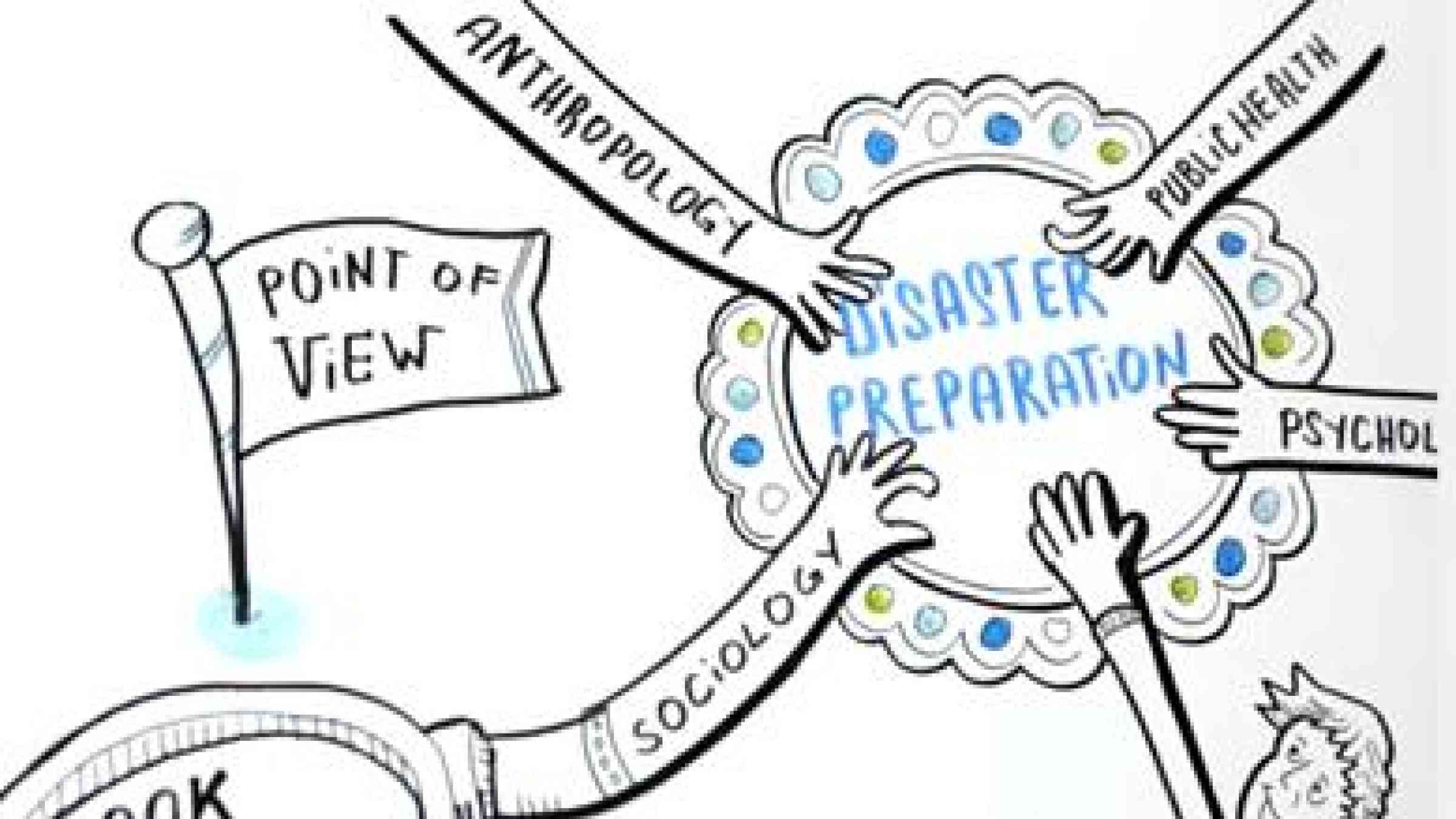World disasters report 2014: Focus on culture and risk

This year, the World Disasters Report takes on a challenging theme that looks at different aspects of how culture affects disaster risk reduction (DRR) and how disasters and risk influence culture.
The report asks, for example, what should be done when people blame a flood on an angry goddess (River Kosi, India, in 2008) or a volcanic eruption on the mountain god (Mount Merapi). After the tsunami in 2004, many people in Aceh (Indonesia) believed that Allah had punished them for allowing tourism or drilling for oil, and similar beliefs were widespread in the United States regarding Hurricane Katrina, showing God’s displeasure with aspects of the behaviour of the people who live in or visit New Orleans.
Most people who live in places that are exposed to serious hazards are aware of the risks they face, including earthquakes, tropical cyclones, tsunami, volcanic eruptions, floods, landslides and droughts. Yet they still live there because, to earn their living, they need to or have no alternative. Coasts and rivers are good for fishing and farming; valley and volcanic soils are very fertile; drought alternates with good farming or herding. Culture and beliefs, for example, in spirits or gods, or simple fatalism, enable people to live with risks and make sense of their lives in dangerous places. Sometimes, though, unequal power relations are also part of culture, and those who have little influence must inevitably cope with threatening environments.
Logic and rationality
Together with other organizations that engage in DRR, we in the Red Cross Red Crescent know about people’s beliefs and cultures and their different interpretations of risk. However, we find it challenging to fit these seamlessly into our organizational framework and funding models. Instead we tend to assume (or hope) that the people we want to support use the same logic and rationality as we do and that they will want to reduce the disaster risk. Sometimes there is also an institutional reluctance to deal with the issues of inequality and power that make people vulnerable in the places where they make a living.
The one thing that is certain is that we will have less sustained impact if we do not adequately take account of people’s cultures, beliefs and attitudes in relation to risk. With climate change leading to damaged livelihoods, and therefore more vulnerability, and making hazards more extreme and/or frequent, we have to get this right.
DRR and development
One important goal of this edition of the World Disasters Report is to bring these complex issues and clashes of cultures into the open for discussion, so that they can be much better incorporated into DRR work. The first part (Chapter 2) assesses the effects of religion and other beliefs. The next chapters (3 and 4) examine the culture of DRR organizations, showing that we are all subject to beliefs and attitudes that frame our outlooks on risk and what should be done about them. It asks why DRR actors and organizations persist in giving priority to severe hazards when they know that most people do not mention them when asked what risks they face. It is difficult for most people to be concerned about occasional and unpredictable severe events (or climate change) when many of their problems are ‘development’ needs that have not been fulfilled. Fortunately, the need for convergence between DRR and development is part of the discussions of the successors to the Hyogo Framework for Action and the Millennium Development Goals. This World Disasters Report also explains how DRR must take account of all the causes of vulnerability – including cultural ones – as the starting point for risk reduction.
Effective engagement with traditional cultures
After this discussion of ‘organizational culture’ (including a challenge to the widespread faith that many have in doing things that are ‘community based’ in Chapter 4), the report assesses how to overcome these barriers for more successful disaster preparedness. This is done first in the context of how traditional cultures can help with shelter and housing (Chapter 5) and also in health and medicine (Chapter 6). These are all areas in which the Red Cross Red Crescent has immense experience and has shown leadership in recent decades.
The final chapter asks what needs to happen next, how to take account of culture for DRR and also the need to build awareness of how ‘organizational culture’ has to change, for example, by not assuming that the people we are supporting are ‘irrational’ but instead accepting that they have different rationalities. It begins the process in which we all need to develop new ways of thinking and acting for DRR so that ourorganizations have a much better alignment with the way people think and act.
This publication does not provide all the answers to these complex issues, which vary a great deal around the world. But it shows where the starting points are. It gives some indications of the direction in which we need to go and draws on examples of good integration of traditional and ‘modern’ ideas for achieving effective vulnerability reduction. Recognizing the significance of the different ways of believing andbehaving will increase the effectiveness of DRR and development initiatives generally and pave the way for greater impact in our responses to the challenges stemming from climate change.
When Hurricane Katrina struck the US in 2005, politicians and some of those affected believed it was God’s punishment for sin in New Orleans. Some Japanese blamed the gods for the 2011 earthquake and tsunami. In West Africa, where the Mount Cameroon volcano erupts every few years, a chief reflected many people’s beliefs in saying: ‘When the mountain god gets angry it causes eruptions.’ Around the world, people’s response to risk is based partly on culture.
Why do people deal with risk in these ways? And why do the organizations that set out to prepare for disasters ignore people’s ‘risk culture’?